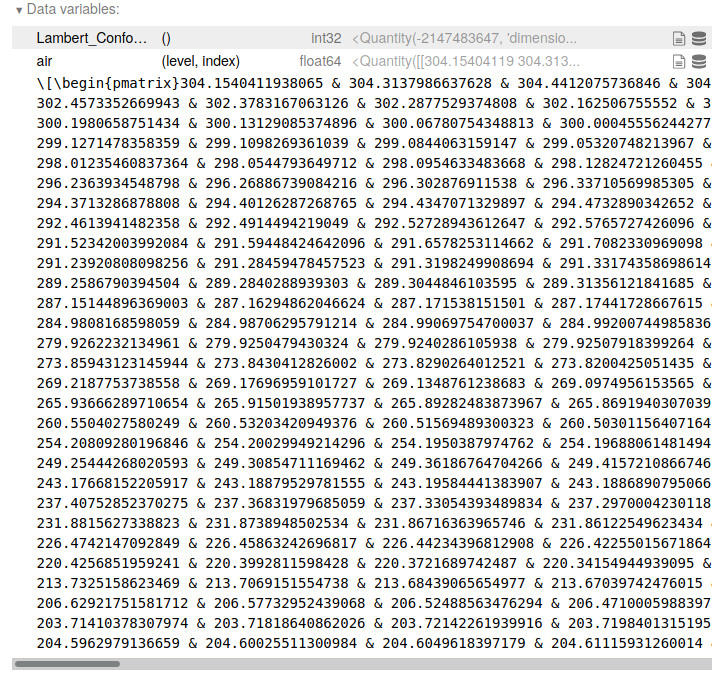One additional thing I've realized is needed since writing https://github.com/hgrecco/pint/issues/849#issuecomment-579992247 is a helper for coordinate unit conversion. Not sure what the best name for this would be though. In MetPy, the tentative name is .convert_coordinate_units, but that really only makes sense since the MetPy accessor's version of .to is .convert_units. Maybe .coordinate_to?
See https://github.com/Unidata/MetPy/pull/1325 / https://github.com/Unidata/MetPy/compare/v0.12.0...jthielen:0-12-patch-xarray-0-15-1?expand=1

@jthielen proposed a rough accessor API in pint/#849, to which I've added a couple of things:
DataArray:
da.pint.to(...): return dataarray with converted units (#11)da.pint.to_base_units(): return dataarray with base unitsda.pint.units: units of quantity (as a Unit)da.pint.magnitude: magnitude of quantityda.pint.quantify(unit_registry=None, unit=None): create DataArray wrapping a Quantity based on string unit attribute of DataArray or specified unitda.pint.dequantify(): replace data with the Quantity's magnitude, and add back string unit attribute from Quantity's unitda.pint.sel(): wrap da.sel to handle indexing with Quantities (by casting to magnitude in the coordinate's units similar to how MetPy does it, since true unit-aware indexing is not available yet in xarray)da.pint.loc: wrap da.loc likewiseda.pint.to_system(system): convert all variables to be expressed in the (base?) units of a different system. Might require upstream additions to pint.Dataset:
ds.pint.to(...): return Dataset with converted units (#11)ds.pint.to_base_units(): return dataset with base unitsds.pint.quantify(unit_registry=None): convert all data variables to quantitiesds.pint.dequantify(): convert all data variables from quantities to magnitudes with units as an attributeds.pint.sel(): wrap ds.sel to handle indexing with Quantitiesds.pint.loc: wrap ds.loc likewiseds.pint.to_system(system): convert all variables to be expressed in the (base?) units of a different system.Anything else?
At some point when the integration is more solidified (but before official release) we should change the accessor from
pinttounits, to get a interface more like what's described here. This would be: a) More intuitive b) Units-library agnostic c) A good fit for potentially using an entrypoint to choose which units library you want to use. There's already an entrypoint for plotting backends in xarray, and plans to add one for storage backends too.